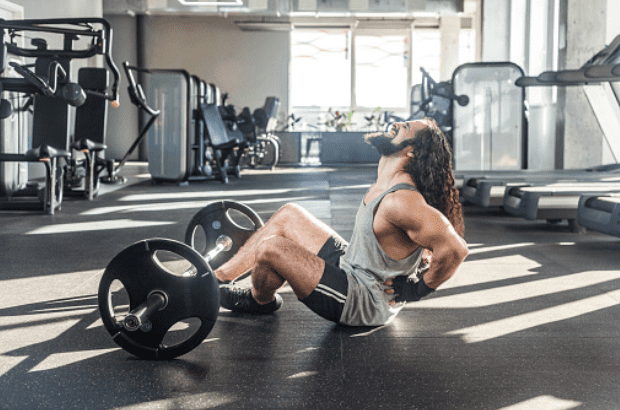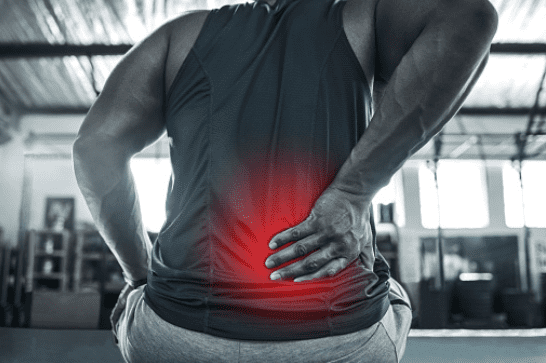- (213) 369-4583
- Monday - Friday
- 9 am - 5 pm
How to Relieve Lower Back Pain from Lifting Weights?

Sep 27, 2022
It is quite common for people to experience lower back pain from lifting weights. Weightlifting can give you sore muscles and a bad back by putting extra pressure on your spine while you perform this activity. The lower back pain due to weight lifting fades away with time provided that you continue to maintain a good form and do it the right way. However, if the pain persists and becomes worse over time, it can be a sign of serious medical conditions like spine damage or torn ligament.
Diagnosing the Cause
Before you start treating your lower back pain from lifting weights, you first must identify the root cause. As the treatment entirely depends upon the cause of the pain. If the pain is due to a minor spasm, non-surgical treatments would suffice but if you have damaged your vertebra, you will be going to need surgical treatments.
Pulling a back muscle during Weightlifting

Muscles have fibers in them that are responsible to facilitate and organize the movement of your limbs and tissues. Symptoms of a pulled muscle in the back are;
- Pain is concentrated in the lower back and doesn’t travel down to the legs or feet
- In case of a muscle strain, the pain is usually dull, sore, and achy.
- Patients with pulled muscle experience a limited range of motion. They also complain about feeling severe pain with specific movements for example bending forward or standing from a seated position.
Treatment
Pulled muscles, when compared to other back injuries, are easier to treat. Conservative treatments like therapies, medications, massage, and exercises can very much cure a strained or pulled muscle. In most cases, patients are rehabilitated within 4 to 6 weeks.
- Take some rest - If you experience any of the symptoms above, immediately stop lifting weights otherwise the condition could get worse.
- Use Ice and Heat Pads - Icing is normally done immediately after the injury to numb the area and reduce swelling. Once the swelling is controlled, then you can use the heat pads to increase the blood flow and expedite the healing process.
- Keep moving - Gentle stretching exercises like Yoga after a couple of days of injury can strengthen the affected muscles. Other rehabilitation exercises include Knee-to-chest exercises, Figure of four (for deep muscle stretches), SLR (Straight leg raise), and Wall sits.
- Soft tissue massage is the treatment of choice which is highly effective when done in the direction of fibers.
- To relieve pain, stiffness, and discomfort, certain medications are prescribed to weightlifters which include NSAIDs (ibuprofen and naproxen), muscle relaxants (baclofen), and topical ointments (capsaicin, lidocaine, and Diclofenac gel). These medications can help weightlifters in speeding up the recovery process in combination with other conservative treatments.
- Application of transcutaneous electric nerve stimulator (TENS) and ultrasound in weightlifters can also help manage lower back pain.
Spine Injuries during Weightlifting
Muscle spasms and strains are common in weightlifting but sometimes, things can go bad and athletes end up injuring their spines. Such situations are not normally life-threatening but these require immediate surgical treatment. One of the most common spine injuries due to weight lifting is disc herniation.
Disc Herniation
Disc herniation refers to the slipping of the gel-like sac that is present between each of your vertebrae. In some cases, a person can have a slipped disc without even knowing about it. He/she might not experience any symptoms whatsoever. In other cases, the slipped disc can cause nerve compression leading to tingling and numbness in the back.
Treatment
If the herniated disc is causing chronic and persistent pain, your doctor can recommend the following invasive surgical procedures;
- Decompression surgery
- Laminectomy
- Laminotomy
- Discectomy and microdiscectomy
For weightlifters, surgery must be avoided as the chances to resume your weightlifting career are very slim after a spine surgery.
Preventing Lower Back Pain from Lifting Weights

As they say, prevention is better than cure. Sports that are as extreme as weightlifting always come with chances of sustaining injury. Having said that, injuries can be avoided by being a little preventive. Given below is a list of a few important things you can follow to minimize the chances of any back injury and prevent lower back pain;
- To decrease pain and increase function, muscle strengthening is highly preferred in weightlifters for future sustainability. As a result, the stronger the muscle, the lesser the chances of sustaining injuries during weightlifting.
- Poor postures, flawed execution of exercises, lifting excessive weights and can lead to injuries in weightlifters, especially when doing squats and deadlifts.
- Warm-up and cool-down exercises are mandatory before and after the session to enhance the flow of blood to your muscles and lessen the chance of injury.
- Always start with sets of slight stretching exercises and slowly move towards the progression of a higher level of resistance.
- Knee locks can be prevented when standing from sitting by keeping your knees soft and straightening your back throughout the lifting.
- Ballistic exercises should be prevented until and unless monitored by a coach.
- Use equipment like a back brace and belt to safeguard your spine against jerks and uncontrolled movements.
- A coach is a must-have for weightlifters to always count for their attempts and safe activity performance.
- Weightlifters' education should be preferred for avoiding muscle overload exercises that are prone to injuries in the lumbar area.

See Dr. Moksha Ranasinghe for Back Pain
Schedule an appointment with Dr. Moksha Ranasinghe for back pain treatment. You can fill out the contact form available on the website or call (213) 369-4583 to speak to someone at the clinic.




